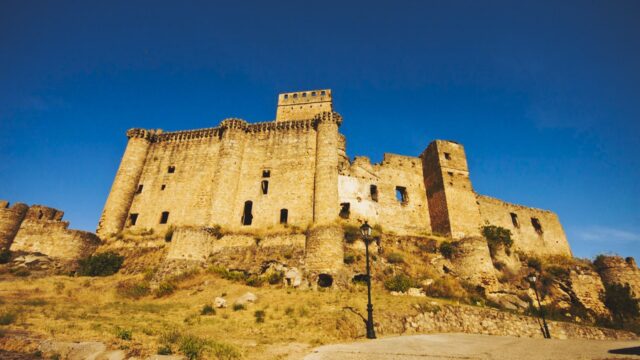Spain has the largest number of castles throughout Europedistributed throughout the territory. Many of them were rehabilitated and adapted as museums, hostels or cultural scenarios. But sometimes, tourism forgets certain jewels and among them, are the most undervalued castles in Spain.
One of the most notorious examples stands in the North of the province of Cáceres. This medieval jewel Started in the fourteenth centurycombines defensive elements with subsequent palatial extensions. Its history starts with a real mandate after the reconquest and reflects the family and strategic conflicts of the time.
What is the medieval building of the fourteenth century considered one of the most undervalued castles in Spain?
Now it’s time to talk about Belvís Castillo de Monroya construction that dates back to Sancho IV times. In the thirteenth century, this monarch donated El Cortijo de Belvís to Hernán Pérez del boat with the task of repopulating these recently reconquered lands.
It was his grandson, Alonso Fernández del boat, who in the fourteenth century began the building of a strong house on which the current Cacereño castle would later develop. For centuries, the castle was expanded in phases that responded to both defensive and residential criteria.
From an initial nucleus, an architectural set that included A clay patio, surveillance towers and daily life spaces. The evolution of the building allowed to integrate styles that range from the Gothic to the Baroque.
The castle It is easily visible from route A-5upon entering or leaving Extremadura, so it is curious that he has not yet received the attention he deserves.
This is Belvís in Monroy inside and outside, one of the most undervalued castles in Spain
Located in a high position in the Belvís town of Monroythe castle dominates the environment from a strategic hill. The main nucleus is formed by three ships that delimit a U -shaped patio.
In their corners, four large towers are raised that reinforce the defensive character of the set. These are just some of the most remarkable elements of the fortress:
- Exterior wall: Surround the entire set, although of different chronology. Part of this structure forms the barbacana.
- ALBARANAS TORRES: Two of the four originals are preserved.
- Perimeter pit: It surrounds three of the sides of the castle, with a depth of between four and five meters.
- Residential dependencies: added in the 16th century to facilitate life inside.
The castle was the scene of family disputes between branches of the Monroy, until an agreement was reached with the marriage of Isabel and Hernán, members of the two faces faced. In this context, the primitive military character was evolving towards a more stable palatial use.
A sad passage from the Castillo de Belvís de Monroy: from war to abandonment
Like many other border castles on the peninsula, Belvís de Monroy lost relevance over the centuries. The succession and independence wars left their mark on the state of the fortress. After these conflicts, abandonment and lack of maintenance They caused the deterioration of a good part of their structures.
Currently, the castle presents obvious signs of ruin, although it retains sufficient elements to understand its original configuration. Some areas have been the subject of consolidation and restoration, especially the most vulnerable areas to landslides.
Despite its importance, the castle remains outside the main tourist circuits. This situation makes it one of the most undervalued castles in Spain, both for its heritage value and for its role in regional history.
Protection and access to Belvís Castillo de Monroy
Since 1949, The castle is protected by the decree of April 22 on the conservation of Spanish castles. In addition, it is protected by Law 16/1985 of the Spanish Historical Heritage.
In spite of legal protection, relevant initiatives of tourism or cultural promotion that integrate it into the castillos of Extremadura or the peninsular group have not been developed.
Today your access is free and freebut if you want to better understand its history through the tour, it is advisable to go to a tour guide.









